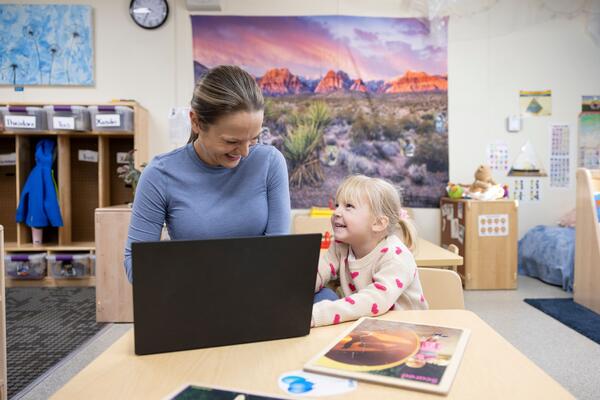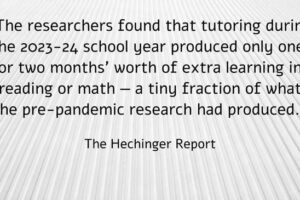
How to Make Career Connections for Online College Learners
Assuring positive career outcomes for college students is a growing priority for institutions, policymakers and students themselves as they consider the value of higher education. A July report from the Center for Higher Education Policy and Practice at Southern New Hampshire University identifies opportunities for institutions to enhance career readiness for online learners and nontraditional students, a growing demographic within undergraduate populations.
The report authors urge college leaders to consider the unique needs and circumstances of working and older students and to develop creative solutions to connect classroom and career learning.
What’s the need: Most students attend college to improve their economic circumstances or to secure employment, according to the report.
Risepoint’s Voice of the Online Learner survey for 2025 finds that majorities work full-time while pursuing a degree (75 percent), are enrolled in a program related to their current industry (78 percent) and are parents with children under the age of 18 (53 percent). The greatest share of students pay for college out of their income and savings (48 percent) or federal loans (41 percent).
However, not every student will participate in a work-based learning experience, and nontraditional students often face the biggest barriers to participation.
A 2024 Student Voice survey by Inside Higher Ed and Generation Lab found that 34 percent of respondents working more than 30 hours a week (n=1,106) said they have had no experience with the career center on their campus. Of that group, students 25 and older (n=501) were far more likely to say they hadn’t engaged with the career center (76 percent).
As a result, the report advocates for flexible, workforce-aligned and embedded strategies to help older students prepare for careers and their lives after college.
Making career connections: CHEPP defines “career connection strategies” as activities, services and experiences that help students select, prepare for and pursue a career path, according to the report. These strategies range from internships to informational interviews and career exploration events.
One opportunity is workforce-aligned curriculum, which focuses on developing students’ skills and competencies in connection to future employment roles. Workforce-aligned curricula can be particularly beneficial for adult and working learners because it makes materials engaging and “keeps them from having to choose between pursuing a degree or work-relevant training,” the report authors wrote.
For example, Calbright College in California, an online public community college, has 10 “durable skills”—such as critical thinking and collaboration—embedded into the curriculum with dedicated modules for each that award students badges upon completion. All academic programs include at least two of these modules in their curriculum.
The authors also advocate for career exploration opportunities that are flexible and tailored to the individual, such as offering career advising alongside credit for prior learning assessments, remote job shadows and employer relations events.
Making career services more accessible on campus should also be a top priority for administrators, because many adult learners do not take advantage of these supports, as highlighted in the Student Voice data.
To accommodate these students, SNHU offers professional communication and career planning courses that focus on career development. Calbright College assigns each student a student success counselor who can address some career readiness and exploration topics and connect them with workshops offered by the career services team.
Key elements: When considering traditional models of career preparation and readiness, the report encourages higher education practitioners and policymakers to determine how best to meet adult and nontraditional students where they are, including by:
- Establishing authentic workforce opportunities that promote real-world professional development, such as having an assignment supervisor or participating in team meetings.
- Respecting and validating learners’ existing skills from previous life experiences, including through credit for prior learning.
- Offering paid opportunities, which allow students to forgo earnings from work in order to pursue new career experiences or development events.
- Pairing advising with comprehensive supports to help students understand options, develop a plan and leverage existing skills.
- Embedding career prep into existing commitments to limit the competing priorities students must balance and the number of hours they spend on career development outside the classroom.
- Identifying clear goals for student learning, including the duties students will perform and outcomes from the experience.
- Instituting good data practices to ensure continuous improvement and gauge employer and student satisfaction at the end of experiences.
Do you have a career-focused intervention that might help others promote student success? Tell us about it.

Source link



